-
Medical silver bullet: New drug cures most viral infections
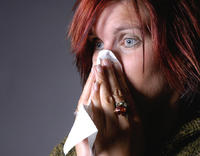
Researchers at MIT’s Lincoln Lab have developed technology that may someday cure the common cold, influenza, and other ailments; the researchers tested their drug against fifteen viruses, and found it was effective against all of them — including rhinoviruses that cause the common cold, H1N1 influenza, a stomach virus, a polio virus, dengue fever, and several other types of hemorrhagic fever
-
-
Reversing metabolism to make biofuels at breakneck pace
Engineers reverse E. coli metabolism for speedy production of fuels, chemicals; a Rice University’s team reversed one of the most efficient of all metabolic pathways — the beta oxidation cycle — to engineer bacteria that produce biofuel at a breakneck pace
-
-
Mosquitoes' last supper
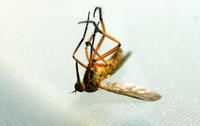
Inhibiting a molecular process cells use to direct proteins to their proper destinations causes more than 90 percent of affected mosquitoes to die within forty-eight hours of blood feeding; the approach could be used as an additional strategy in the worldwide effort to curb mosquito-borne diseases like dengue fever, yellow fever, and malaria
-
-
New technology makes textiles permanently germ-free

University of Georgia scientist develops a new technology that makes textiles permanently germ-free, targeting healthcare-associated infections; the new material effectively kills a wide spectrum of bacteria, yeasts, and molds that can cause disease, break down fabrics, create stains, and produce odors
-
-
Promise of vaccine against deadly malaria parasite

Every year, 10,000 pregnant women and up to 200,000 newborn babies are killed by the malaria parasite; the body’s immune system normally attacks any foreign body, but since our spleen constantly filters our blood and removes ruined or deform blood cells, the body’s natural defense does not need to check the blood; the malaria parasite exploits this fact by using its advanced arsenal of protein hooks to attach itself to the inner side of the blood vessel; researchers find a soltuon
-
-
Confusing mosquitoes to fight mosquito-borne disease
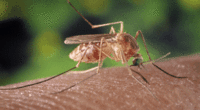
Female mosquitoes are efficient carriers of deadly diseases such as malaria, dengue and yellow fever, resulting each year in several million deaths and hundreds of millions of cases; to find human hosts to bite and spread disease, these mosquitoes use exhaled carbon dioxide as a vital cue; a disruption of the vital carbon dioxide detection machinery of mosquitoes, which would help control the spread of diseases they transmit, has been a long sought-after goal; University of California-Riverside scientists find a way to do just that
-
-
Decision on smallpox virus destruction delayed for three years
After a second round of negotiations Tuesday, the World Health Assembly (WHA) agreed to postpone setting a date for destruction of the world’s remaining smallpox virus stocks for another three years; the assembly simultaneously reaffirmed previous statements that the virus stocks should be destroyed after “crucial research” is completed; several countries, mainly developing ones, pushed for immediate destruction of the smallpox virus stocks, while others suggested a short delay for setting a deadline; U.S. officials had introduced a resolution to retain the virus stocks for at least another five years to allow work on bioterrorism countermeasures to continue; U.S. Secretary of Health and Human Services (HHS) Kathleen Sebelius said, however, that the United States was committed to the eventual destruction of the virus stocks
-
-
Fate of last smallpox virus samples to be determined today
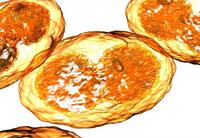
The World Health Organization officially declared in 1979 that smallpox has been eradicated; in the three decades since the WHO declaration, the Centers of Disease Control and Prevention (CDC) in Atlanta, Georgia, and a Russian government laboratory near Novosibirsk have been the last two places to keep samples of the smallpox virus; during this time, there have been many calls by scientists and advocates to destroy these last samples — some of these calls accompanied by dark hints that the two countries wanted to hang on to the samples in order to use them as a basis for a future bio-weapon; the United States opposes the destruction, saying that the live samples are needed to develop vaccine with less adverse side effects as well as two other related drugs; a committee of the World Health Organization is meeting today in Geneva to make a decision
-
-
Secrets of plague unlocked with stunning new imaging techniques
Sandia Labs researchers have developed a super-resolution microscopy technique that is answering long-held questions about exactly how and why a cell’s defenses fail against some invaders, such as plague, while successfully fending off others like E.coli
-
-
Researchers use app to map spread of infectious diseases
Researchers in the United Kingdom are using cell phones to map how infectious diseases are spread to help tailor public health policies during a mass outbreak; researchers developed a special app, called FluPhone, for mobile phones that gathered medical data from the user as well as information on how they interacted with other people; the app provides a scientific method for measuring the social activity of an entire population in real-time; FluPhone app can also be used to run simulations on how a disease would actually spread
-
-
Social media helps CDC track Playboy Mansion disease outbreak

Thanks to social media outlets, medical researchers are one step closer to discovering why more than 120 people were infected with a mysterious illness following a 3 February party at the Playboy Mansion; investigators suspect that the bacteria that causes Legionnaires’ disease may have been the source of the outbreak after its presence was discovered in the grotto of the Playboy Mansion; officials used online tools like Twitter, Facebook, and online polling to help track the disease outbreak; these tools were particularly helpful because they allowed officials to quickly identify the outbreak, communicate quickly with conference goers who came from thirty countries, and to issue instructions for the infected
-
-
Promising anthrax treatment study results
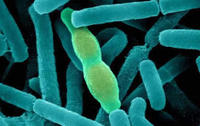
Researchers find that a multi-agent prophylaxis which is initiated within twenty-four hours after the infection, prevented the development of fatal anthrax respiratory disease; treatment which combines antibiotics with immunization and a protective antigen-based vaccine offered long-term immunity against the disease
-
-
Satellite information helps eradicate mosquitoes
Louisiana’s St. Tammany Parish is partnering with Colorado-based location intelligence software company aWhere, Inc. to test a new satellite-based surveillance system that can locate and analyze potential mosquito breeding sites with near pinpoint accuracy
-
-
Starving bugs dead
One way to kill bugs and pests is to starve them to death; caterpillars attack tomato and potato plant in order to extract an enzyme called threonine, or TD1 — a key nutrient caterpillars need to grow; Michigan State University researchers show that the potato and tomato plants release an enzyme — called TD2 — which caterpillars consume at the same time they consume TD1; TD2 has devastating effects a few hours later — in the pests’ stomachs; TD2 goes to work in the gut of caterpillars to degrade TD1; in effect, the plants concede the first battle — allowing caterpillars to consume as much TD1 (but also TD2) as they wish — in order to win the war (the caterpillars will be dead within a few hours)
-
-
Superbug sweeps across Los Angeles hospitals
Last week, public health officials in Los Angeles reported an outbreak of a drug-resistant superbug in several local healthcare facilities; the deadly drug-resistant strain is Klebsiella pneumonia (CRKP) and is estimated to kill 40 percent of those who are infected with it; the LA county health department has identified 356 cases of the bacteria over a six month period; CRKP has primarily been infecting senior citizens; CRKP is part of a larger wave of antibiotic germs that have plagued hospitals in recent years; the bacteria was originally found on the east coast of the United States, and was only first seen last year in the Los Angeles area
-
- All
- Regional
- Water
- Biometrics
- Borders/Immig
- Business
- Cybersecurity
- Detection
- Disasters
- Government
- Infrastructure
- International
- Public health
- Public Safety
- Communication interoperabillity
- Emergency services
- Emergency medical services
- Fire
- First response
- IEDs
- Law Enforcement
- Law Enforcement Technology
- Military technology
- Nonlethal weapons
- Nuclear weapons
- Personal protection equipment
- Police
- Notification /alert systems
- Situational awareness
- Weapons systems
- Sci-Tech
- Sector Reports
- Surveillance
- Transportation
Advertising & Marketing: advertise@newswirepubs.com
Editorial: editor@newswirepubs.com
General: info@newswirepubs.com
2010-2011 © News Wire Publications, LLC News Wire Publications, LLC
220 Old Country Road | Suite 200 | Mineola | New York | 11501
Permissions and Policies
Editorial: editor@newswirepubs.com
General: info@newswirepubs.com
2010-2011 © News Wire Publications, LLC News Wire Publications, LLC
220 Old Country Road | Suite 200 | Mineola | New York | 11501
Permissions and Policies
